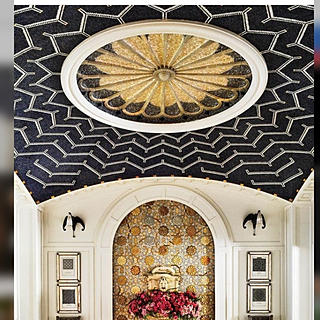From the past to the present
- esta hasa
- Jan 4, 2018
- 3 min read
Architecture is part of the art categories but different from all the forms that we know and get to experience, it is limited on what it is because of the technical means through which it is created. Different forms of art use several means so that the artist will be able to express but architects have to consider this technical means so that their ideas can be turned into a solid product.
Everyone who fins interest in the process of experiencing arts may have struggled once or more to understand what is supposed to be said. In the same way an architectural work may give an immediate impact which catches our attention for a specific reason that lies under our subconsciousness, but still , giving reasons for the use of forms and construction elements requires for further, more extended discussions.
A certain object to be built requires a lot of thought to be put on it, so that it can accomplish some basic conditions, which should be taken in consideration for achieving desired results. In one way or another, conditions like: stability, durability, function and maximum result with minimum means; have described buildings different in quality, but even built in different periods of time. For the architects of the past maybe these conditions have been completed because intuition and need pushed to choose some kind of materials and forms, and the overall scheme placed these forms in an order.
Seen as technical methods, the conditions mentioned above contribute directly in the architectural expression. Choices that the architect makes about the building methods or the materials used, do not only contribute in making the building stable the external forces or durable towards the external factories. Everything employed in the building to fulfill the basic conditions has an impact in the aesthetic aspect as well. In a correctly built building, different forms placed where the vision of the observer can reach must have a structural function by contributing efficiently and not only being another ornamental element. Sure, this fact isn't an utilitarian one, but using what you have in your hands in the more sufficient way is part of building correctly. To achieve this the architect has to think about the size, employing a proportioning rule, so that a relationship will exist between the size of the elements and the overall image.
The Gothic period has left behind great architectural works, built correctly as we can judge now, where the technical and aesthetic aspect come together to crate a work of art.
With the construction and architectural aspect working in a way that satisfies our expectation, it can not be clarified which one goes after the other in the logical order. As technology has evolved the aesthetic perception is easier to get perceived because of the good use of materials brought to the desired state, but still the already known relationships used in great architectural works can not be used in the exact same way so that result will be the same.
Experience taught architects and builders in the past to make changes for the good as their expectations and desires changed. However, only when technical means got a scientific base as calculations and established methods, architecture achieved the state of creating beyond the limits, which couldn't be surpassed because the lack of knowledge.








Comments